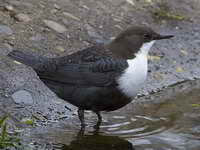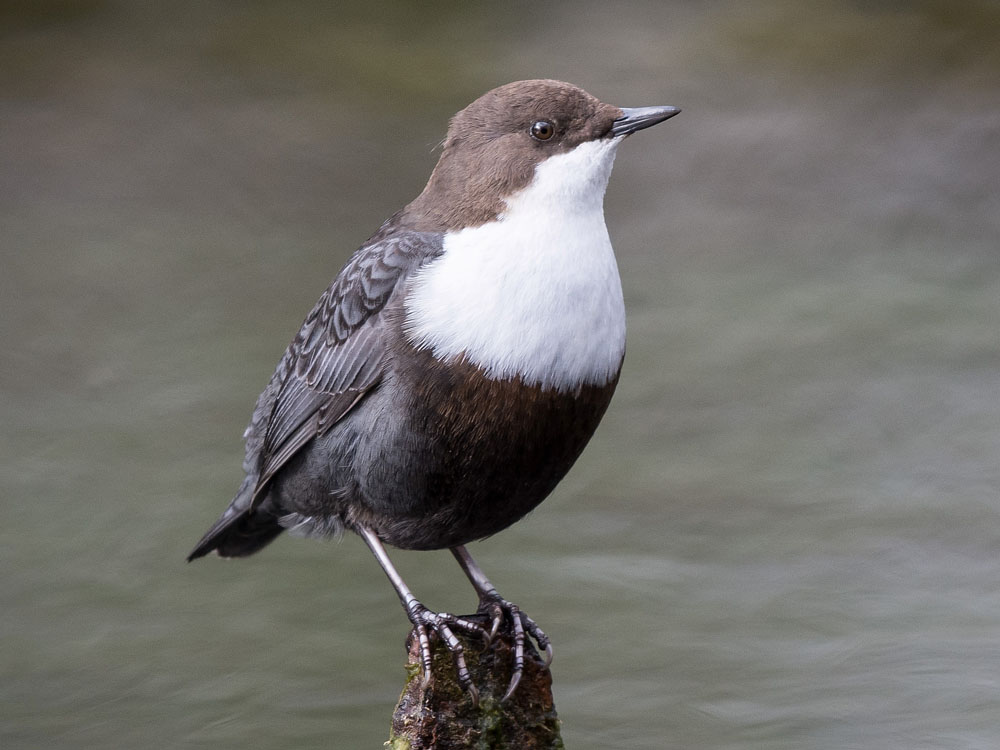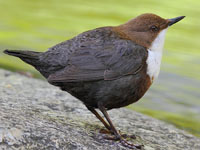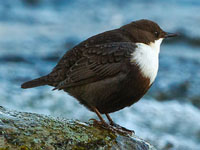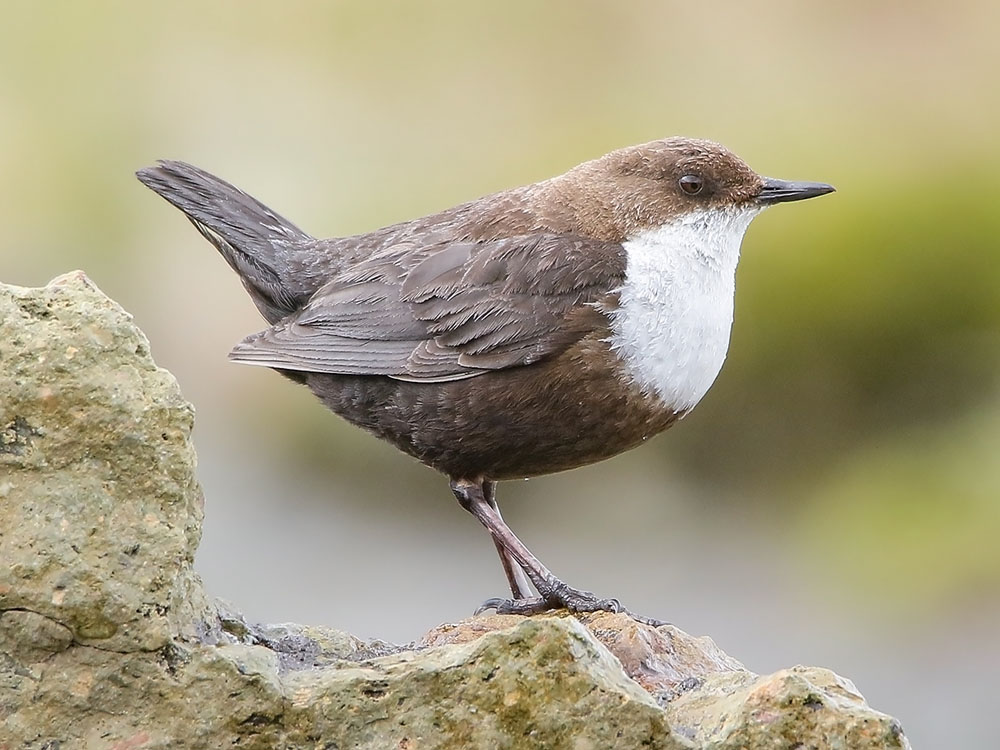The dippers of family Cinclidae are all in a single genus Cinclus. They are named for the dipping or bobbing motion. They are the only passerines that regularly swim underwater. They like to swim in moving water, particularly in streams. As with other birds that spend large amounts of time underwater, they have more red blood cells to aid in oxygen storage. All are stocky, with short wings and tails. During breeding season they are found near clear cold water streams and rivers that are fast moving. At other times they may be found at lakes or the coast.
They usually stand on rocks peering in the water for prey. While they do have web feet to aid in swimming, they are agile underwater due to short wings that reduce drag and the wings are strong for underwater swimming. They have long strong legs that they sometimes uses to climb down rocks into the water and wade until submerged. To help they stay underwater, their bones are denser than usually and they have flaps to cover the nostrils to prevent water from entering. Also, like most water birds, they have a preen gland the utilize to waterproof the feathers.
Their food most always come from the water: water insects, their larvae, small fish, and fish eggs. They will also eat crustaceans and molluskes. The domed shaped nest with a side entrance is built near the water. It is usually not placed in a tree, but in a protected site such as crevice, on a ledge or they may utilze a man-made structure such as under a bridge.
Dippers are most closely related to the thrush family Turdidae.
Genus Cinclus
Dipper,_American Cinclus mexicanus
Description: The American dipper has mainly grey plumage. The large grey head has a brown tinge. The neck, wings, and tail are short. The American dipper is up to 20 cm long. If its local streams and rivers freeze in the winter, then it moves to lower elevation or further south, but there is no general migration.
Range: Western North America to Panama.
Habitat: Clear cool running water.
Diet: Aquatic insects, larvae, fish eggs, small crawfish. Also small fish.
Conservation status: Least Concern.
Range: Western North America to Panama.
Habitat: Clear cool running water.
Diet: Aquatic insects, larvae, fish eggs, small crawfish. Also small fish.
Conservation status: Least Concern.
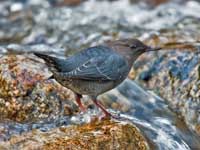
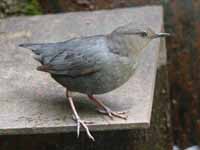
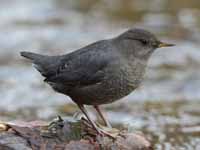

Dipper,_Brown also Asian Dipper Cinclus pallasii
Description: The brown dipper, also known as the Asian dipper, has brown plumage. It has a faint white eye-ring. It is 21 to 23 cm long.
Range: Mountains of southern and central Asia .
Habitat: Clear cool running water.
Diet: Aquatic insects, larvae, , fish eggs, small crawfish. Maybe tadpoles and small fish. Other bottom dwelling small animals. During breed season they will dive for food; other times they usually just wade.
Conservation status: Least Concern.
Range: Mountains of southern and central Asia .
Habitat: Clear cool running water.
Diet: Aquatic insects, larvae, , fish eggs, small crawfish. Maybe tadpoles and small fish. Other bottom dwelling small animals. During breed season they will dive for food; other times they usually just wade.
Conservation status: Least Concern.
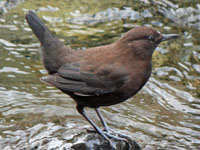
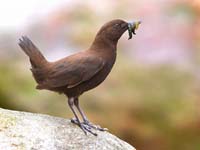

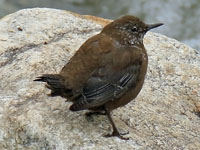
Dipper,_Rufous-throated Cinclus schulzi
Description: The rufous-throated dipper has mainly grey plumage. It has a rufous throat, rufous upper breast, and a dark grey bill. The rufous-throated dipper is about 15 cm long. It is most closely related to the white-capped dipper.
Range: Northwestern Argentina, southern Bolivia.
Habitat: Rocky streams of the Southern Andean Yungas between 800 and 2500 meters.
Diet: Aquatic insects, larvae. Has been seen catching insects in the air, but not diving under water.
Conservation status: It is listed as Vulnerable due to dams and irrigation.
Range: Northwestern Argentina, southern Bolivia.
Habitat: Rocky streams of the Southern Andean Yungas between 800 and 2500 meters.
Diet: Aquatic insects, larvae. Has been seen catching insects in the air, but not diving under water.
Conservation status: It is listed as Vulnerable due to dams and irrigation.
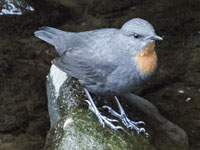
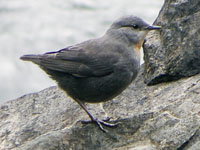

Dipper,_White-capped Cinclus leucocephalus
Description: The white-capped dipper has dark brown upperparts. It has a white head and throat. Depending on the subspecies, the rest of the underparts vary from all brown to all white. It has a black bill and dark grey legs. The white-capped dipper is 15 to 17 cm long.
Range: Along the Andes from Venezuela to northern Bolivia.
Habitat: Fast moving rocky streams and rivers.
Diet: Aquatic insects, larvae, crustaceans; also worms, small fish.
Conservation status: Least Concern.
Range: Along the Andes from Venezuela to northern Bolivia.
Habitat: Fast moving rocky streams and rivers.
Diet: Aquatic insects, larvae, crustaceans; also worms, small fish.
Conservation status: Least Concern.

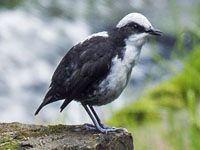
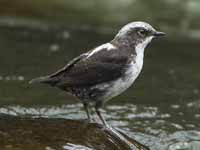
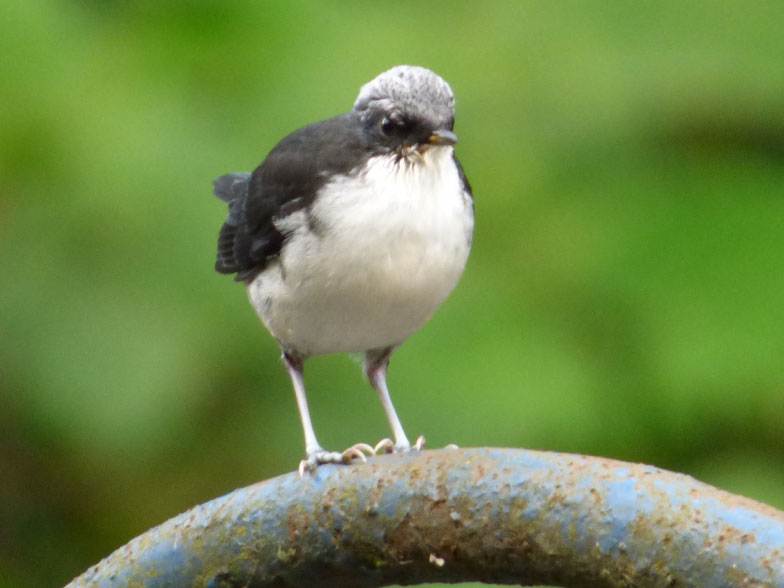
Dipper,_White-throated Cinclus cinclus
Description: The white-throated dipper, also known as the European dipper, has slate-grey upperparts with black mottling. It has brown head, wings, and tail. The throat and upper-breast are white. legs, eyes. It has a black bill and blackish legs. The white-throated dipper is up to 20 cm long.
Range: Europe, Asia.
Habitat: Clear cool running water. May be found at warmer and slower moving water in nonbreeding seasons.
Diet: Aquatic insects, larvae. Also small fish, fish eggs, small crustaceans.
Conservation status: Least Concern.
Range: Europe, Asia.
Habitat: Clear cool running water. May be found at warmer and slower moving water in nonbreeding seasons.
Diet: Aquatic insects, larvae. Also small fish, fish eggs, small crustaceans.
Conservation status: Least Concern.
